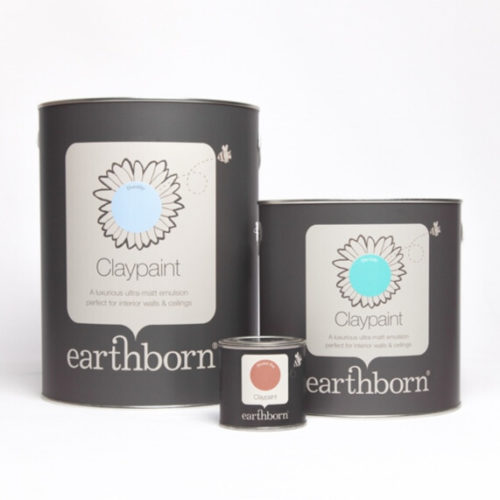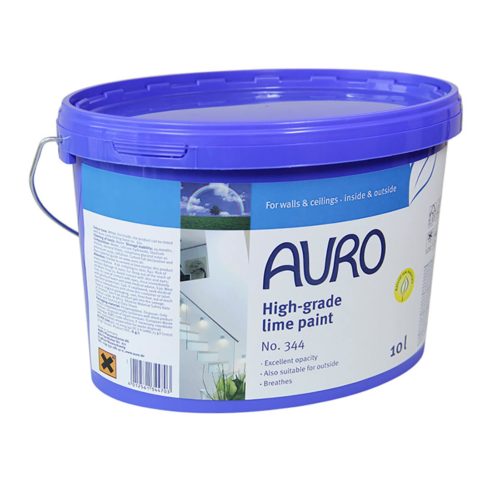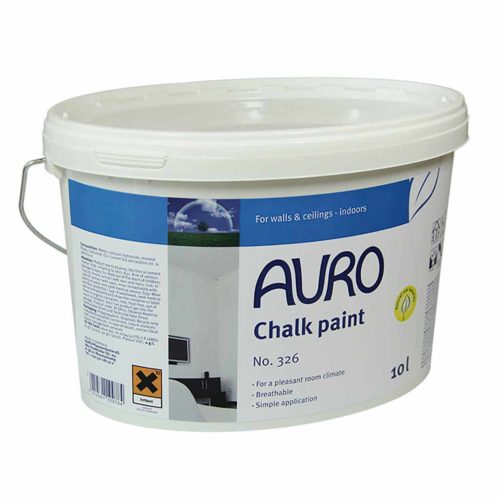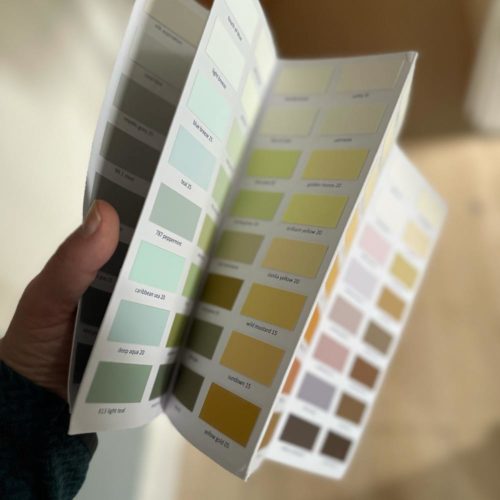Lime plaster walls have unique characteristics and function that go well beyond just covering up internal brickwork. This traditional plaster type is highly breathable, which means it needs to be painted with a breathable paint.
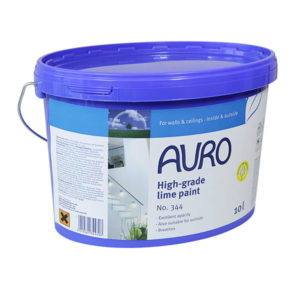
Many modern paints claim to be breathable, but if they're made with plastic binders such as acrylic and vinyl, they'll trap moisture inside the lime plaster walls which can cause damp and damage to your walls.
In this guide, we'll explain why lime plaster must be paired with breathable paints, when you can start painting, the best products to use, and how to apply them properly.
Why Lime Plaster Needs Breathable Paint?
Lime plaster needs breathable paint because it's "vapour open", which means moisture in the wall can pass through and evaporate rather than being trapped inside walls and causing damage.
This remarkable finish can hold up to half a litre of water per square yard, meaning it really does help your home to breathe and stay healthy. Plastic based paints form a barrier on the breathable plaster surface, which removes its breathability. Damp gets sealed in and you may see mould growth, peeling paint, and persistent damp in your home.
Breathability is measured using an Sd value.
For example:-
- An SD of 0.01–0.05 means vapour travels only 1–5 cm to escape the paint.
- An SD of 1 means vapour must travel 1 metre – 100 times further.
For lime plaster, always look for paints with an SD value below 0.5. If a paint brand doesn't state an SD value, avoid it. "Breathable" is not a regulated term and is often used for greenwashing.
When Can You Paint Over Lime Plaster?
Once new lime plaster has been applied, you should wait for it to be fully dried and cured prior to painting. This process takes at least 4 weeks, and will vary depending on how thickly the plaster has been applied. Check the manufacturer's instructions to ensure it has enough drying time to take paint.
Old lime plaster can be painted as long as it's in good condition and fully dry.
As a rule of thumb:-
- New lime plaster – wait at least 4 weeks, check moisture with a meter or by looking for dark patches. If it feels cool or damp, it's not ready.
- Old lime plaster – check condition before painting. Powdery patches, damp, or peeling old paint should be repaired first. If you have damp issues, make sure you eliminate the cause before painting.
The Best Breathable Paints for Lime Plaster
So what's the best paint for lime plaster walls? We stock many paints that work perfectly with lime plaster. Here are our top recommendations, all highly suitable for this purpose and returning excellent results on lime based surfaces.
- Graphenstone GCS Interior and GCS Exterior – The best all-round choice for most lime plaster walls. Excellent breathability, strength, and coverage, with a wide colour range. Suitable for both modern and heritage properties.
- Graphenstone Ambient Pro – A modern replacement for limewash. Lime and mineral based, ideal for traditional homes or when you want an authentic matt mineral finish.
- Auro 344 Lime Paint – A classic white lime paint offering a simple, natural finish.
You can see our entire range of paints suitable for lime plaster here.
How to Prepare Lime Plaster Before Painting
Preparation is essential for a long-lasting finish:
- Check for moisture – never paint over damp plaster.
- Repair cracks or holes – use lime filler or fine finishing plaster.
- Remove old paint – non-breathable paints should be stripped back.
- Dust off the surface – a dry or slightly damp cloth will do.
How to Paint Lime Plaster – Step by Step
1. Apply a Breathable Mist Coat
Thin your chosen breathable paint with around 20% water and apply as a mist coat. This helps the paint bind to the plaster without sealing it.
2. Use Thin, Even Coats
Apply one or two thin coats with good quality rollers and brushes. A worn roller can slip on smooth plaster, so invest in the right tools.
3. Allow Proper Drying Time
Breathable paints such as Graphenstone usually dry in 2 – 4 hours and can be recoated the same day.
4. Touch Up Imperfections
Bumps or blemishes can be sanded back with fine paper and repainted. Small gaps can be filled with lime filler and touched in seamlessly.
FAQs About Painting Lime Plaster
Can you paint lime plaster with emulsion?
No. Standard emulsion contains plastic and is not breathable. Always choose paints tested for lime plaster.
Do you need a primer on lime plaster?
No. Just thin your first coat of breathable paint with water (mist coat) and build up layers naturally.
Can you leave lime plaster unpainted?
Yes, but it will mark easily. A breathable finish protects the plaster while retaining vapour movement.
Can you paint over limewash?
Yes, as long as the surface is sound. Use a breathable mineral or lime paint on top.
Can you paint over lime mortar?
Yes. Use breathable mineral or lime-based paints for best adhesion and breathability.
Why Natural Paints Are Best for Lime Plaster
Natural paints work in harmony with lime plaster and traditional materials, helping your walls regulate moisture naturally. They're better for indoor air quality and more sustainable for the planet. They are free from plastics, microbeads, and harmful VOCs.
By avoiding greenwashed plastic paints and choosing genuine mineral or lime based paints, you'll protect your walls for decades.
Read more: What is lime paint? | Difference between gypsum & lime plaster | How are lime paints made? | What is limewash? | How to apply limewash | Best paint for exterior lime render | Can you use clay paint on lime plaster? | Do you need to prime lime plaster before painting? |
Next Steps – Choosing Colours and Testing Finishes
The best way to decide is to order a paint chart or swatches and test how colours look in your home. Natural paint pigments can change subtly with daylight, so tester pots are always worthwhile.
Contact us for help and advice if you need help understanding what your next paint project needs!


